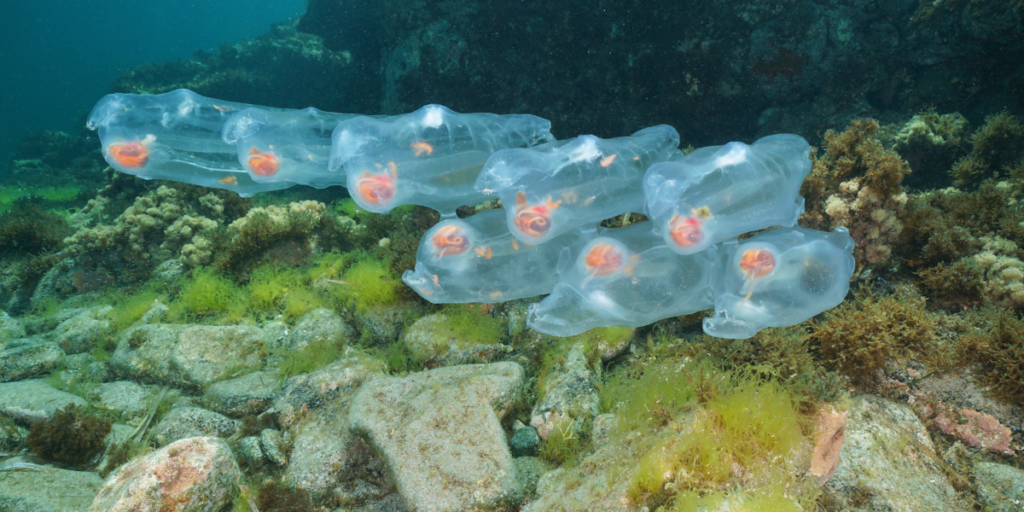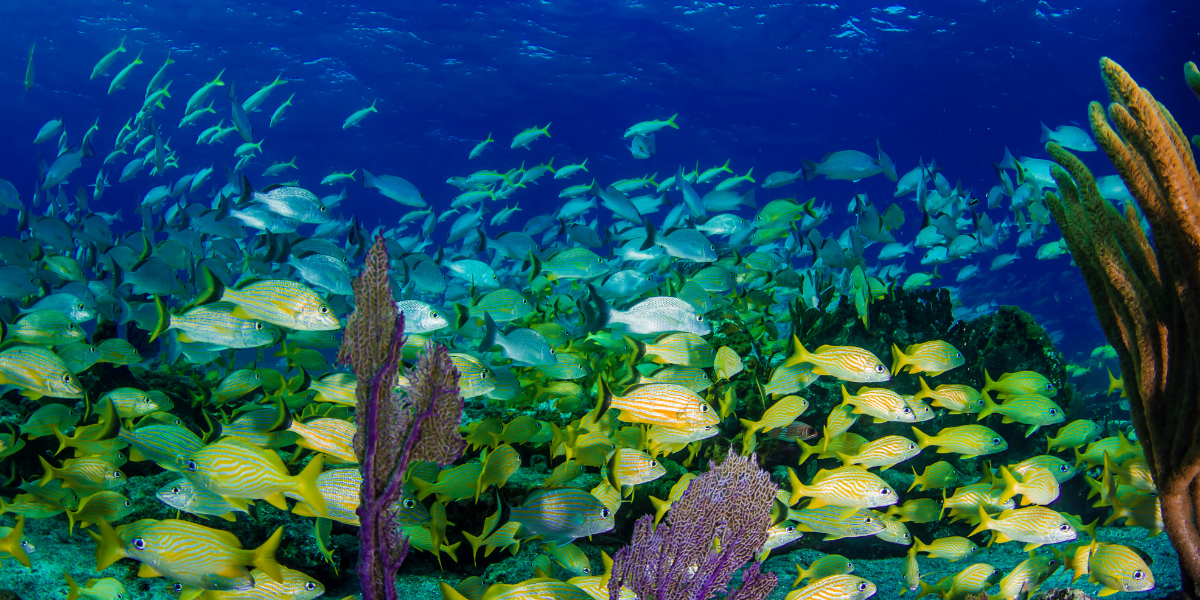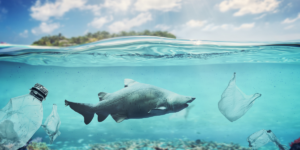If you’re curious about what makes up a healthy marine ecosystem, you’ve come to the right place.
The components of a healthy marine ecosystem are diverse and complex, but they all work together in harmony to create a thriving environment for countless species of plants and animals.
Physical factors such as temperature, salinity, sunlight, currents, and waves play a crucial role in shaping the environment of a marine ecosystem.
These factors determine what types of organisms can survive in different parts of the ocean and how they interact with each other.
Biological factors such as biodiversity, food webs, and symbiotic relationships are also essential components that contribute to a thriving marine ecosystem.
In this article, we’ll dive into the interdependence of these components and explore why it’s important to preserve our oceans for future generations.
Key Takeaways
- Healthy marine ecosystems are diverse and complex, with physical and biological factors working together in harmony.
- Physical factors such as temperature, salinity, sunlight, currents, and waves, and biological factors such as biodiversity, food webs, and symbiotic relationships are important components of a healthy marine ecosystem.
- Plankton serves as the base of the food chain and produces half of the oxygen we breathe, while algae provides shelter and sustenance for various marine animals, but can also cause harmful algal blooms.
- Marine animals play a crucial role in maintaining the health of our oceans, and conservation efforts aimed at protecting them are increasingly important. Threats to marine ecosystems include overfishing, pollution, climate change, and habitat destruction, and steps towards protecting these ecosystems include sustainable fishing practices, reducing pollution, and addressing climate change. Preserving marine ecosystems is crucial for ensuring the health and well-being of interconnected communities and maintaining the balance of our planet’s ecosystem.
Physical Factors
The physical factors, such as temperature and salinity, play a crucial role in determining the health of a marine ecosystem – ‘you can’t have your cake and eat it too.’
Ocean currents, for example, are important because they help distribute nutrients and oxygen throughout the water column. When there is an imbalance in ocean currents due to climate change or other human activities, it affects the entire food chain.
Water temperature also has a significant impact on marine ecosystems. Warmer waters can lead to coral bleaching, which occurs when corals expel their symbiotic algae due to stress from high temperatures. This not only harms the corals themselves but also other organisms that rely on them for shelter and food.
Additionally, changes in water temperature can affect migration patterns of fish and alter the timing of reproduction cycles.
Overall, physical factors are just one piece of the puzzle when it comes to understanding what makes a healthy marine ecosystem.
Biological Factors
As you delve into the subtopic of Biological Factors, it’s important to recognize the crucial role that plankton plays in marine ecosystems. These tiny organisms serve as the base of the food chain and are essential for sustaining larger marine life.
Algae also play a significant role in these ecosystems by providing both shelter and sustenance for various marine animals.
Finally, it’s worth exploring the diverse range of marine animals themselves and how they interact with their environment to shape these complex systems.

Plankton
You’ll be amazed at how vital plankton is to a healthy marine ecosystem. Plankton diversity is essential as it provides the base of the food chain for many species in the ocean.
Phytoplankton, a type of plankton, produces half of the oxygen we breathe through photosynthesis. Zooplankton, on the other hand, serves as food for small fish and other marine animals.
Plankton populations are susceptible to changes in temperature and water chemistry caused by climate change. As temperatures rise and sea ice melts, phytoplankton blooms may occur earlier or later than usual, disrupting feeding patterns for larger organisms that rely on them for sustenance.
Additionally, increased carbon dioxide levels can lead to ocean acidification which affects calcifying plankton such as coccolithophores and pteropods. Without these crucial organisms, the entire food web could collapse with devastating effects on marine ecosystems worldwide.
Algae
Picture yourself walking along a beach and seeing vibrant green seaweed washing up on the shore – this is just one form of algae, which come in many shapes, sizes, and colors and play important roles in both marine and freshwater environments.
Algae are photosynthetic organisms that produce oxygen, serve as food for other marine organisms, and contribute to nutrient cycling in aquatic ecosystems. However, when conditions are favorable for their growth, algae can also undergo rapid reproduction leading to what’s known as an algal bloom.
Understanding algal blooms is crucial for maintaining a healthy marine ecosystem. Some species of algae can produce harmful toxins that can have serious impacts on human health if ingested or through contact with skin. These harmful algal species often thrive in areas where there is an excess of nutrients such as nitrogen and phosphorus from agricultural run-off or sewage discharge.
By monitoring water quality and taking measures to reduce nutrient pollution, we can prevent harmful algal blooms from occurring and ensure the continued health of our oceans.
Marine Animals
Marine animals, from tiny plankton to massive whales, play a crucial role in maintaining the health of our oceans. They’re not only important for their own sake but also for the entire ecosystem that they support.
Marine animals interact with each other and their environment through complex behaviors such as communication, migration, and predation. These behaviors are essential for the survival of individual species and the overall health of marine ecosystems.
Conservation efforts aimed at protecting marine animals have become increasingly important as human activities continue to threaten ocean habitats. Overfishing, pollution, and climate change all contribute to the decline of marine animal populations.
Implementing sustainable fishing practices, reducing plastic waste in oceans, and addressing climate change are some ways that we can help protect these creatures and the ecosystems they inhabit.
Without healthy marine animal populations, our oceans will suffer from imbalances that could have far-reaching consequences on both wildlife and humans alike.
Interdependence of Components
If you want a healthy marine ecosystem, it’s important to understand the interdependence of its various components.
This includes the food chain and symbiotic relationships between different species. For example, small plankton serve as the base of many marine food chains, providing energy for larger animals like fish and whales. These larger animals in turn support other predators and scavengers in their respective ecosystems.
Symbiotic relationships also play a crucial role in maintaining a healthy marine environment. Certain species rely on each other for survival, such as clownfish living within the tentacles of sea anemones or cleaner shrimp that remove parasites from larger fish. Without these interactions, entire ecosystems can be disrupted or even collapse entirely.
Therefore, it’s important to consider how different components interact with one another when studying and managing marine environments.

Threats to Marine Ecosystems
We must recognize and address the various dangers facing our precious ocean environments, from pollution and overfishing to climate change and habitat destruction. These threats can have devastating effects on marine ecosystems, causing a loss of biodiversity and disrupting the delicate balance of life in the ocean.
Protecting biodiversity is essential for maintaining healthy marine ecosystems. Overfishing is one of the biggest threats to biodiversity as it can lead to the depletion of certain fish populations, which in turn can impact other species that depend on them for food. Sustainable fishing practices are crucial in ensuring that we don’t deplete fish populations beyond their capacity to recover.
Additionally, reducing pollution and addressing climate change are also important steps towards protecting marine ecosystems from further harm. It’s only through collective efforts and responsible actions that we can ensure a sustainable future for our oceans.
Importance of Preserving Marine Ecosystems
You can imagine the ocean as a complex network of interconnected communities, each with their own unique species and habitats. Preserving marine ecosystems is crucial for ensuring the health and well-being of these communities, as well as for maintaining the balance of our planet’s ecosystem.
Sustainable fishing practices are an essential component of preserving marine ecosystems because they ensure that fish populations are not overexploited, which can lead to imbalances in the food chain and endangerment of certain species.
However, pollution poses a significant threat to marine life and can have devastating effects on marine ecosystems. Pollution from land-based sources such as industrial runoff or oil spills can contaminate waterways, harming aquatic plants and animals. It also affects human health by contaminating seafood that people consume.
By reducing pollution through proper waste disposal and regulation of industrial activities near waterways, we can help protect the delicate balance of marine ecosystems and safeguard the benefits they provide us with.
Frequently Asked Questions
How do human activities such as overfishing and pollution affect the health of marine ecosystems?
Human activities like overfishing and pollution have a negative impact on marine ecosystems. Fishing regulations can help mitigate the effects of overfishing, while marine protected areas are important in preserving biodiversity and habitat.
What role do plankton and other small organisms play in the overall health of a marine ecosystem?
You may not realize it, but plankton and other small organisms are crucial to a healthy marine ecosystem. For example, phytoplankton produce half of the world’s oxygen and serve as the base of the food chain for zooplankton, which in turn feed larger marine animals. Without these tiny organisms, the entire ecosystem could collapse.
Can climate change and rising sea temperatures have a significant impact on marine ecosystems?
As sea temperatures rise due to climate change, marine ecosystems are at risk of ocean acidification and coral bleaching. These changes can have significant impacts on the health of the ecosystem, disrupting food chains and altering habitats.
What are some examples of keystone species in marine ecosystems and how do they contribute to the overall health of the ecosystem?
Do you know which species are crucial for maintaining ecological balance in marine ecosystems? Keystone species such as sea otters, sharks and coral reefs play a vital role by regulating populations and providing habitat, ultimately contributing to the overall health of the ecosystem.
How can individuals and communities take action to help preserve and protect marine ecosystems?
You can take action to preserve and protect marine ecosystems through community engagement and sustainable practices. This includes reducing plastic waste, supporting responsible fishing practices, and advocating for marine conservation policies.
We would like to thank our sponsor Rapid Fix Garage Doors for supporting our website and if you need a quality garage door service contact them today.



